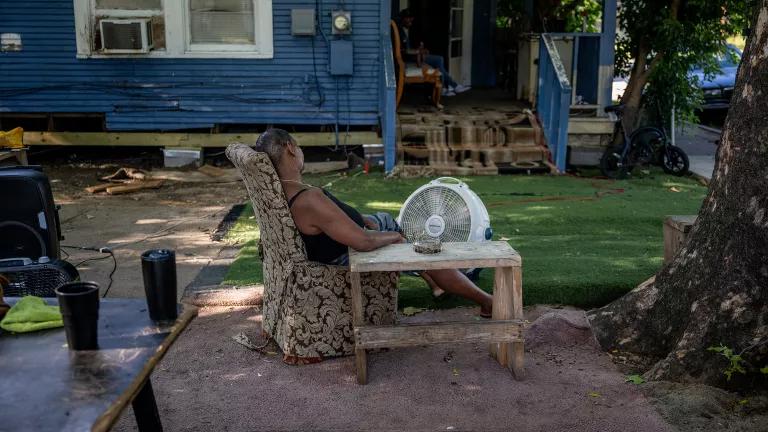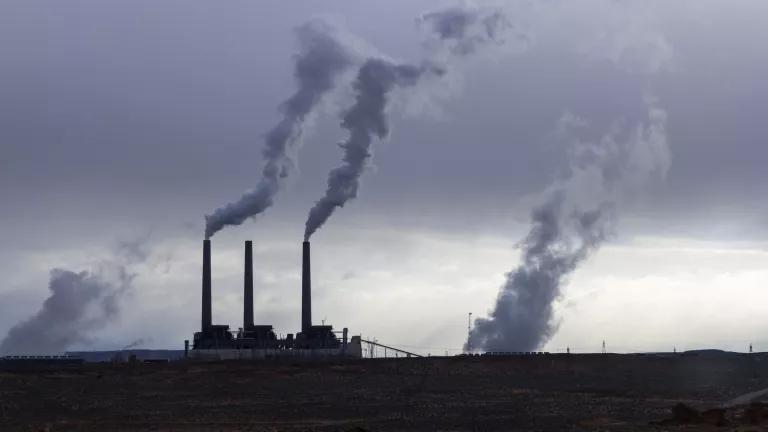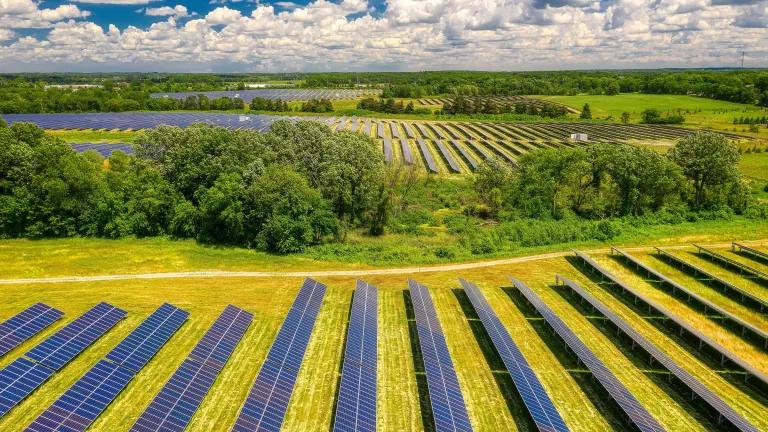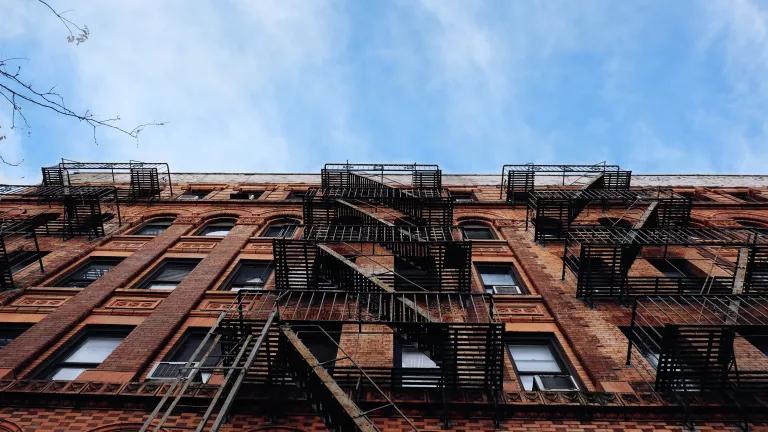Extreme Heat Necessitates Extreme Action for Our Homes
Equitable building decarbonization can help alleviate the risks of warming temperatures for the most impacted groups, make homes healthier, and more efficient.

Yvette Johnson, 54, sits next to a fan outside of her family's home during a heatwave alert on June 10, 2022 in Houston, Texas.
Brandon Bell/Getty Images
This blog is by Kate Connolly, a postdoctoral research scientist at Columbia University Mailman School of Public Health with a joint appointment at NRDC. NRDC supported the leadership of the BEEP coalition in the creation of a new issue brief.
This past summer, I was struck by the sheer number of extreme climate-related events that gripped the news day after day: from a seemingly unending bombardment of days over 90°F in the southeastern US to high temperature records set across the US and around the world. These extreme weather events have been exacerbated by the climate crisis and now are more frequent, more intense, and deadlier, especially for vulnerable populations and communities that lack sufficient access to cooling. To properly withstand these events, we must be better prepared, especially in what should be our most prized and safest place: our homes. To consider the history and context around these issues and more, we have co-authored an issue brief that explores the intricate relationship between socioeconomic factors, housing, health, energy burden, and climate and the potential for equitable building decarbonization to meet many goals.
Extreme heat events have become much more common, as what happened in the Southeast (more days over 90°F), has occurred in many regions in recent years. Acceleration of extreme heat events is also predicted in the coming decades; for example, the California Healthy Places Index: Extreme Heat Edition forecasts that large areas of the state will experience many days of over 90°F by the mid-twenty-first century. Heat-related health events like heat exhaustion and heat stroke are life-threatening conditions, with people who are biologically susceptible, like children and people over the age of 65 years, at greater risk. Other people’s health is more threatened because they spend more time exposed to extreme heat, such as outdoor construction and agricultural workers, or someone who doesn’t have an air conditioner (AC), or has one but cannot afford to use it.
Overall, people in the U.S. spend the majority of their day indoors, with a lot of that time spent in their homes. Older homes often are not weatherized – that is, they do not have good insulation and they lack air sealing, so air from the outside can easily infiltrate inside through gaps around windows, doors, and other openings. These homes tend to be drafty and energy inefficient, making it much harder to keep cool and adding up to costly utility bills in hot summers. Low-income households, people of color, undocumented residents, and manufactured home residents often experience these housing deficiencies and disparities disproportionately.
Furthermore, access and ability to use AC is not equitably distributed in the U.S. by housing type, home ownership, income level, and race/ethnicity. For example, in a national survey, lower-income households had an AC use rate of 77-80% while the highest income groups had an AC use rate of 93%. There are also differences in the health impacts by race/ethnicity with a study across many U.S. cities finding that heat-related deaths for Black residents were more prevalent than for White residents.
Many housing and energy research studies focus on large scale energy- and emissions-related questions primarily for single-family homes, while lower-income households, their priorities, and the realities of their conditions are not considered. As a public health scientist focused on housing and climate research, I am primarily concerned with promoting equitable policies that improve health, reduce greenhouse gas (GHG) emissions, and center the needs of the most impacted communities, so I chose to research the impact of projected climate conditions in 2050, home weatherization, and access to AC on utility costs and indoor temperatures in multi-family homes.
We created a building simulation modeling study that centered the residential experience under changing climate conditions expected over the next 30 years in Massachusetts, including hotter summers. We found that weatherization retrofits greatly reduced overall utility costs in multi-family homes and those homes previously without AC access could lower their average summer indoor temperatures between 6 and 11 degrees Fahrenheit when provided with cooling subsidies. This is huge for health - this level of temperature decrease could save lives and provide other major health benefits, such as decreasing asthma symptoms, which we know are worsened by extreme temperatures.
Further, we found that providing cooling did not significantly raise overall energy use, both due to the weatherization upgrades that made homes more energy efficient, and because it was warmer in the summers and winters—so the reduced demand for heating basically offset the increased need for cooling. This shows how we can have both healthy and energy efficient buildings when we prioritize equity in our implementation.
Policy recommendations to address this in homes include providing cooling subsidies through existing federal and state programs, setting maximum temperature thresholds in homes that protect renters from extreme heat, and implementing more cooling strategies in hot urban areas. In our issue brief, we have outlined numerous policy recommendations around protecting residents, prioritizing the experiences of the most impacted communities, and addressing long-standing housing, energy, and health equity issues.
By centering people who have been left out of these conversations but who experience the most adverse conditions, we can ensure our approach to building decarbonization is equitable and will benefit families’ wallets, health, and the climate.
Catherine (Kate) Connolly is an environmental health and data scientist with extensive interdisciplinary training in the fields of public health, energy systems, climate adaptation, and buildings. She is currently collaborating on projects with both fellow scientists and environmental justice community leaders. Her work focuses on public health, housing, and climate mitigation/adaptation and policy-driven housing environmental quality research. Kate’s interests include cooking, playing the piano, and going for walks along the Long Island Sound.



